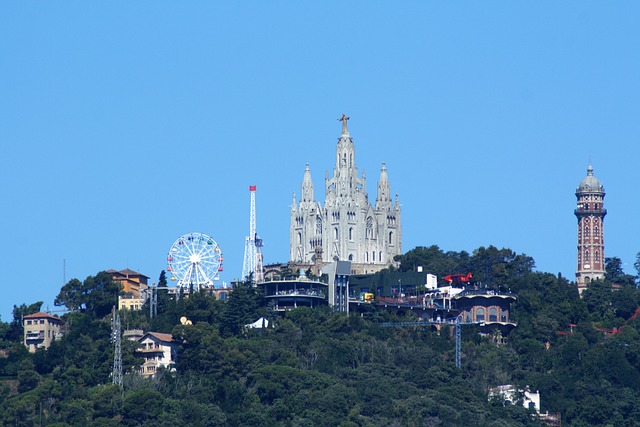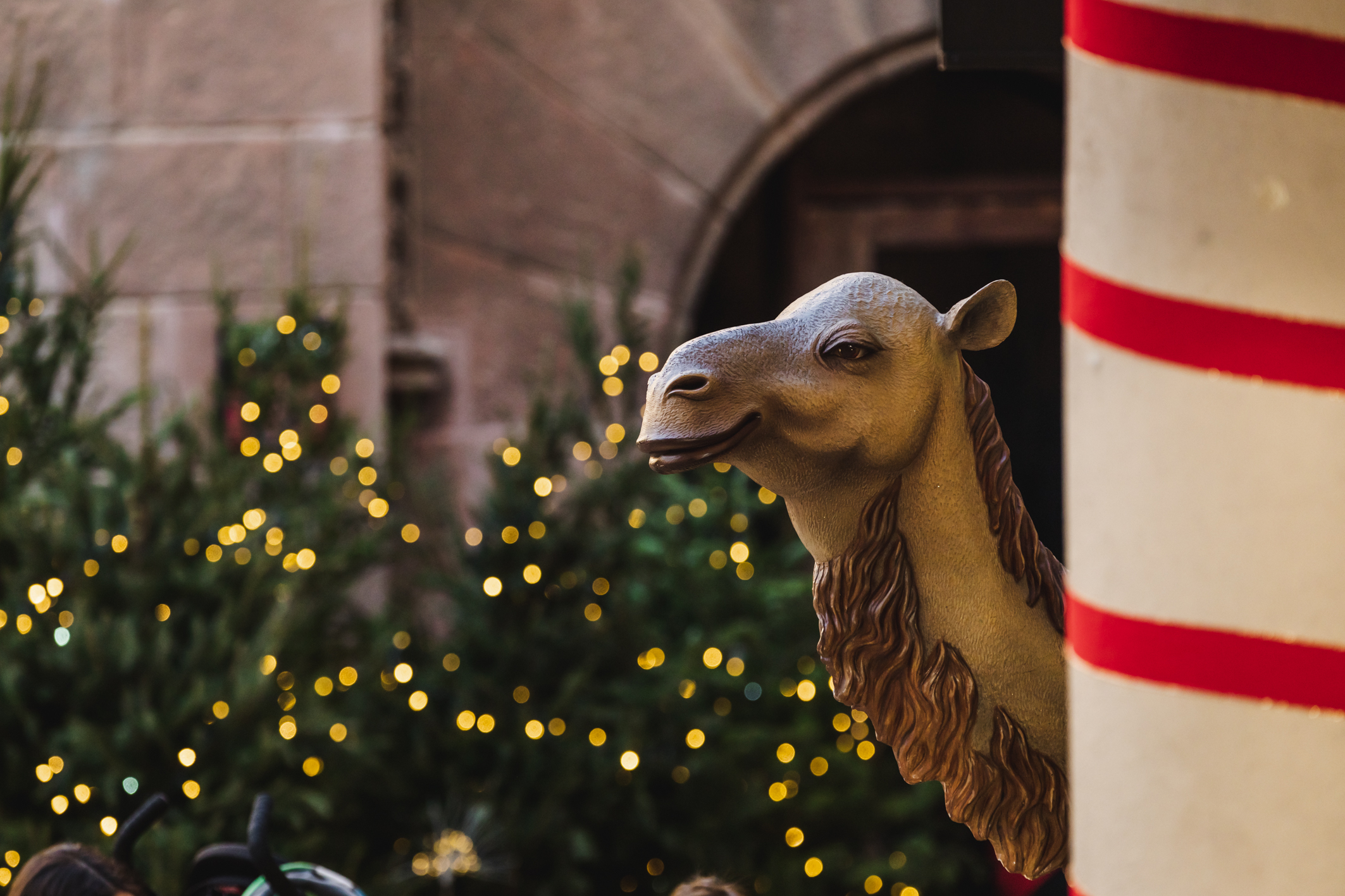The Tibidabo amusement park, one of the oldest in the world, opened in 1901. Among its numerous attractions, the oldest have become classics and are a reflection of the modernity of the early 20th century. One of the park’s most emblematic attractions is ‘El Avion’ (‘The airplane’). Inaugurated in 1928, it is, even today, one of the park’s star attractions. Suspended from an iron structure, the plane circles taking in impressive views of Barcelona below. Neither is it just any plane being an exact replica of the Rohrbach Roland tri motor that took off from Barcelona on December 14, 1927 and landed in Madrid, the first commercial flight between the two cities. The 10 people who boarded the first Iberia flight experienced travel at a maximum speed of 205 km/h. The replica of the park, promised visitors it “will take you like a gigantic bird over an incredible panorama so you will feel the sensations experienced in air travel.”
In May of that same year, the 5th edition of the Barcelona Motor Show was held at the Palacios del Parque de Montjüic to showcase the latest advances and technology in the motor world to the public. Aiming to satisfy public curiosity, models recreated the process of building a car.
This was a time of continuous innovation and technological advances. The field of culture also showed a desire to move forward, to reach goals that had not been met before.
On June 18, 1927, a concert starring the Orfeó Català had to be repeated for the third time at the Palau de la Música. The success of the previous two was such that a new performance was added to allow more people to witness that event. The Orfeó Català performed for the first time in their history one of Beethoven’s most important works, the Missa Solemnis.
Not only were people who went to one of the three concerts able to listen to it, but a recording was made and it was broadcast live on the radio. The subsequent impact of the concert was such that congratulations were received from outside the country.
And what is Tibidabo’s role in this story? At the end of the article, you will find out.
The 3 concerts at the Palau and the live broadcast on Radio Barcelona
In 1927 the centenary of Beethoven’s death was commemorated throughout the world and all the institutions and musical groups paid their own tribute to the German composer. The Orfeó Català, led by Lluís Millet, considered that the 100-year event to be the perfect moment to do something that had not yet been achieved, to premiere Beethoven’s Missa Solemnis. A complex work, requiring numerous musicians on stage.
In principle, 2 performances of the same concert were scheduled on June 8 and 12. The success of these performances among the public and critics alike, and the emotion of having managed to perform the work, was such that it infected a large part of Barcelona society and an extra performance had to be scheduled at the last minute for June 18, 1927.
Thanks to the hand programs preserved in the Orfeó archive, we can put names to the soloists who participated in this concert. The soprano Andrea Fornells, the contralto Concepción Callao, the tenor Hermann Brünig, the bass Emilio B. Forgas, the violinist Eduard Toldrà, and the organist Vicente María de Gibert. All of them accompanied by an orchestra of between 50 and 80 musicians conducted by maestro Lluís Millet.
The schedule of this last function on June 18 is somewhat curious if we compare it with what we are used to today. Although it was Saturday, the audience entered the Palau de la Música room at 10:00 p.m. It is striking how late the session began. We don’t know if this was due to a scheduling issue, as the concert on the last day was also broadcast live on Radio Barcelona.
Disk recording
As we have already mentioned, the concert was so important that the recording studios of the time wanted to capture it. Looking through the archive, we have found the contract between the Orfeó and the Gramófono company, for the rights to the recording of the Mass. It was not an exclusive contract; the musical institution could offer the recording rights to other companies. In addition, the contract stated that the approval of the Orfeó was required to issue or sell the recording.
The recordings of Beethoven’s Missa Solemnis at the Palau are considered among the first of this masterpiece.
The recording was luxuriously edited, with a case containing 12 discs to hold the approximately 90 minutes of music. Reading the texts on the case, we know that takes of all 3 concerts and rehearsals were used. In addition, they describe some curious details:
“During the celebration of the festivals our records were pressed. They reflect the warm atmosphere of a room full of spectators in a feverish state of enthusiasm. A momentary lack of skill by our technicians has also given the opportunity to notice the shower of applause, at the end of the Credo, with which the audience crowned the masterful work of musicians and singers”
The Post Concert
Thanks to the broadcast of Radio Barcelona, the concert could be followed by numerous fans all over Europe. Both the Palau de la Música and the radio headquarters received congratulations by telegram and by letter. Many of these documents are also kept in the archives and show the affection and interest of many institutions and individuals for the success achieved.
So much so that the board of the Orfeó decided to celebrate on July 3 of that year with a great banquet for 350 people in one of the most fashionable places in the city, El Tibidabo.
Apart from the amusement park, an elegant building was located on the mountain where the restaurant attended by the guests was located. The celebration must have been very famous since there are many images of the banquet itself, of the exterior of the restaurant and of course, some members of the choir on the most famous of the park’s attractions, the Aerial Railroad.
In addition, the menu with which they celebrated their success has survived. It consisted of hors d’oeuvres, Catalan rice, beef with sauce and roast chicken. To end the banquet, ice cream, sweets, fruit and coffee were served. We also know that attendees drank white and rosé wine and toasted with champagne. At the end of the meal, sardanas were danced on the esplanade until nightfall.
Fortunately thanks to the archive of the Palau de la Música and the Orfeó Català, we can still hear the audio of a Missa Solemnis by Beethoven that will be remembered forever.
Did you like this article? Click here and visit all the others. You’re sure to love them!
 Book Tickets
Book Tickets



